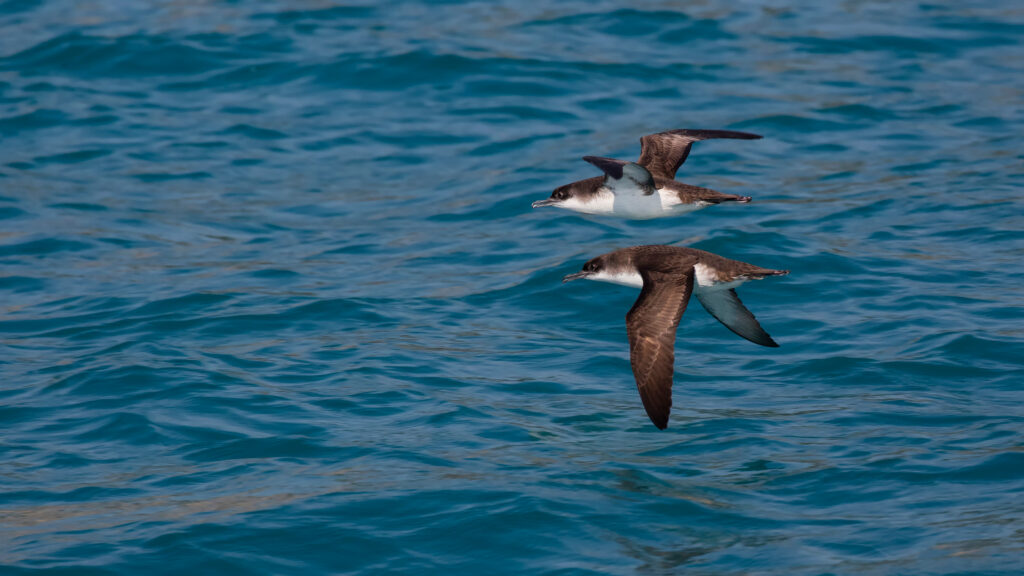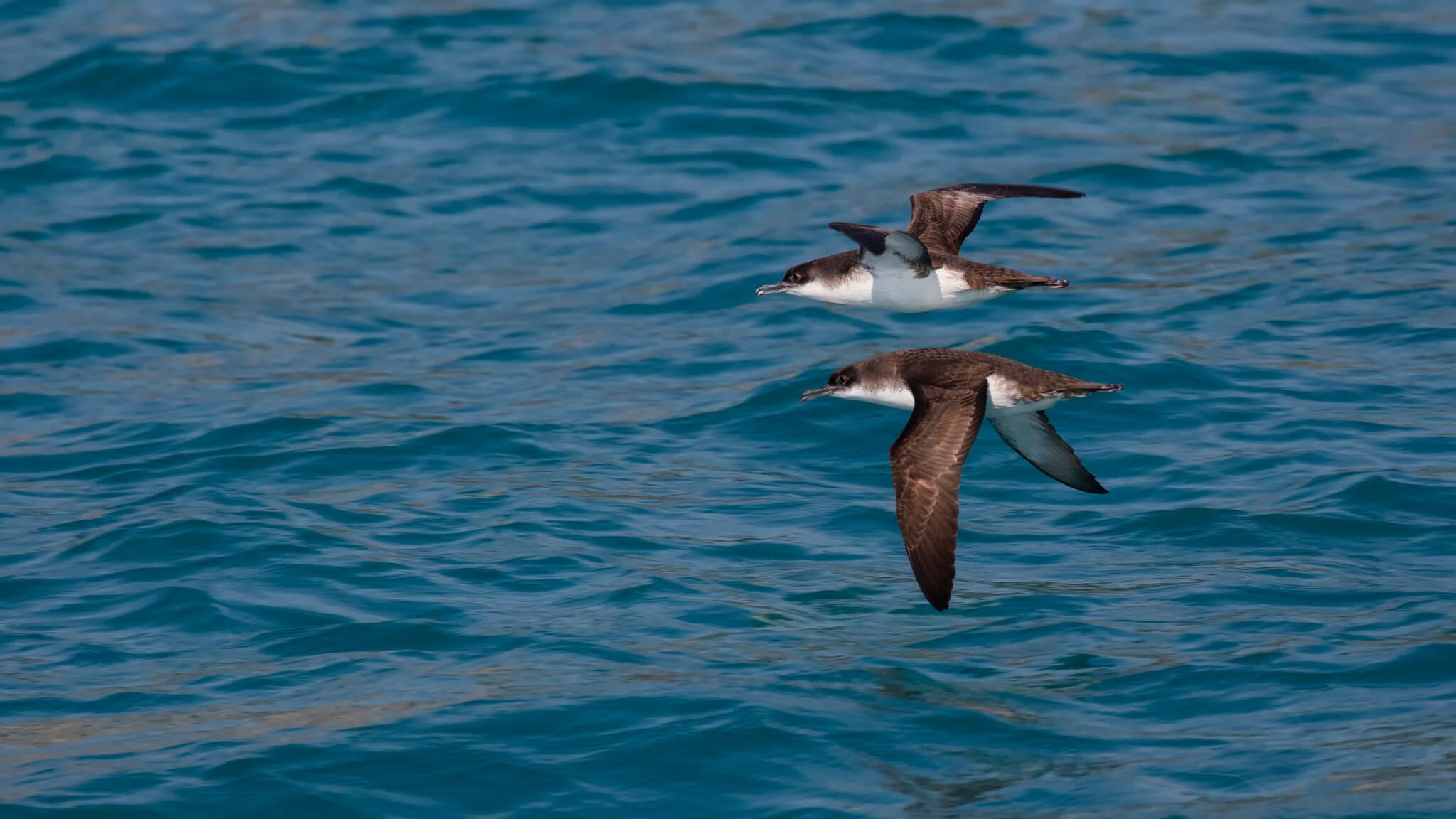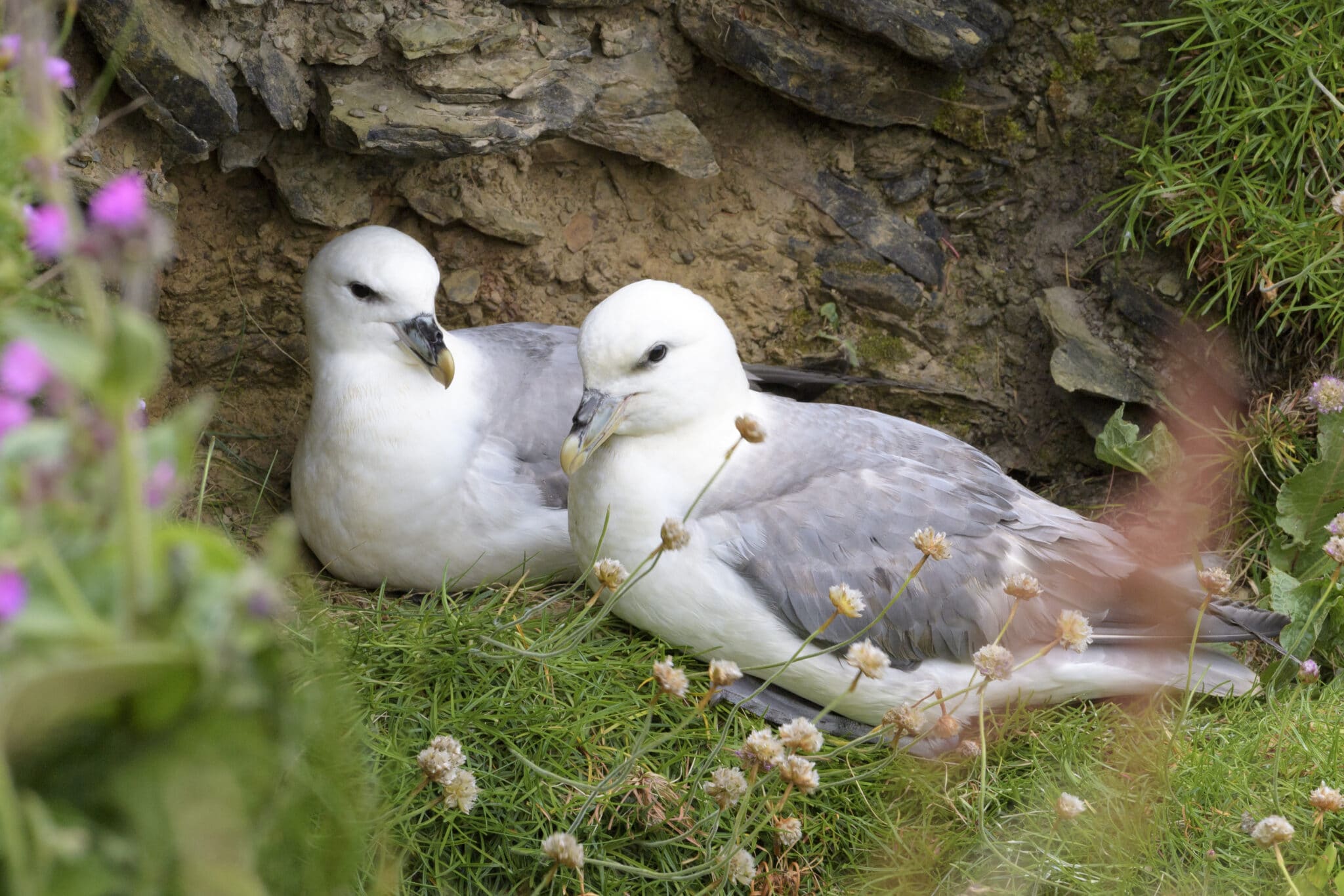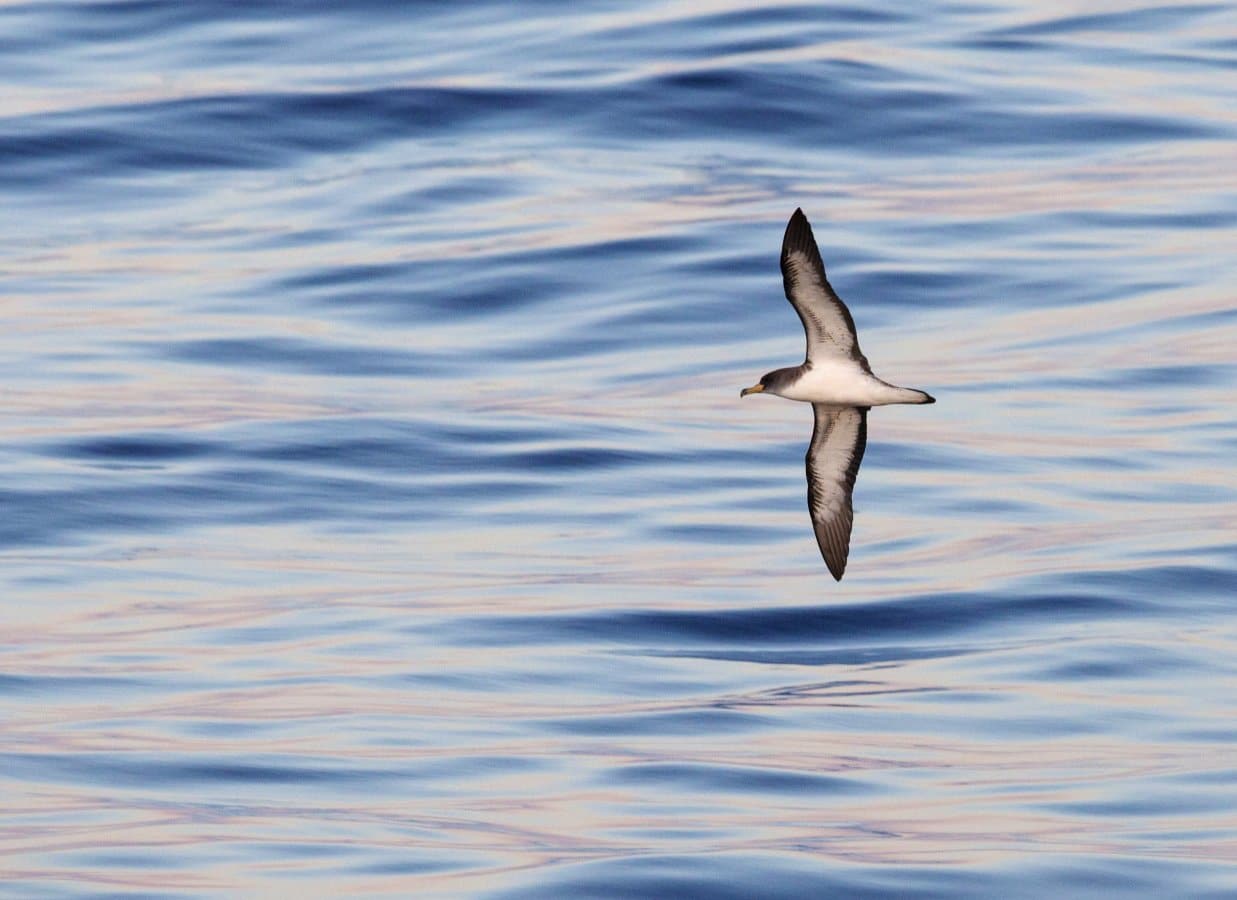Annual Lifecycle of a Seabird – A spring feast: life at a breeding colony

As winter comes to an end, the awakening of spring announces the return of seabirds to their bustling breeding grounds.
This is the second in a series of articles exploring the different stages of a seabird’s annual lifecycle.
Written By Antonio Vulcano & Daniel Mitchell
These colonies gradually come alive with the arrival of the birds, as they embark on their pre-breeding migration, a faster journey compared to their autumn migration. The urge to mate and secure a spot on the busy cliffs drives them back to their colonies, with species like the Yelkouan Shearwater (Puffinus yelkouan) even returning as early as the winter months.
After leading a solitary life at sea during winter, many seabird species reunite with their lifelong partners upon reaching their colonies. Several species exhibit strong philopatric tendencies, meaning they return to the colony where they were born. Monogamous species like the Northern Gannet (Morus bassanus) strengthen their pair bonds through a behaviour known as ‘fencing’, – rubbing their bills back and forth.
In the Netherlands, the Lesser Black-backed Gulls (Larus fuscus), that migrate longer distances, arrive later compared to the migrating birds covering shorter distances. However, they still manage to synchronize their breeding activities with the rest of the colony, resulting in a shorter pre-laying period. This shorter period does not impact the egg volume or hatching success.
In a study focused on the breeding of Yelkouan Shearwaters in Malta, it was observed that females undertake longer and more distant journeys during this crucial pre-laying period, known as exodus, compared to males.

Breeding synchrony and egg-laying in colonial seabirds are driven by social benefits such as tranquillity and reduced stress levels. The timing of egg-laying varies among species and populations within the same species across their range.
Producing an egg requires an abundance of nutrients. Acquiring calcium, which is necessary for the shell, is particularly challenging, especially on short notice. Seabirds like guillemots, can easily secure the extra calcium carbonate they need by eating their animal prey whole.
In many seabird species, male and female birds take turns incubating the egg. The brood patch, an area of skin from which feathers are lost just before egg-laying, serves as a heat source to maintain the right temperature for the developing egg. The length of the incubation period varies among species. Shearwaters, for example, have longer incubation periods as the embryo inside the egg grows slowly due to the scarcity of food near the colony. While shearwaters typically lay only one egg, gulls and terns can lay between two and five eggs. Among European seabirds, the Common Guillemot (Uria algae) stands out with its pointed-shaped eggs, an adaptation that prevents them from rolling off the precarious breeding ledges on cliffs.
Hatching marks the pinnacle of the incubation process, with the chick breaking out of the shell using a small, hardened structure at the tip of its beak called an egg tooth. In colonial species like guillemots, which live in incredibly dense populations without nests, the chick and its parents must recognize each other’s voices even before hatching.
Threats
Once seabirds return to their breeding sites to lay their eggs, they become vulnerable to land-based threats such as natural predators and invasive alien species. Mice, rats, and cats pose the most significant threat to seabirds globally, affecting a large number of species (165 across various threatened groups). These predators can easily prey on eggs, chicks, and sometimes even adult seabirds.
Over the past decade, several countries in Europe have undertaken eradication programs and implemented biosecurity measures to prevent the re-invasion of invasive alien species. Notably, our UK Partner, the RSPB recently completed a project that significantly improved the biosecurity on 42 of the UK’s seabird Special Protection Area (SPA) islands through collaborations among island communities, businesses, managers, landowners, conservation organizations, and statutory bodies. In Croatia, our Partner BIOM led a project to eradicate and control rats on important seabird colonies in the Lastovo Archipelago. This initiative resulted in an overall increase in breeding success for Yelkouan and Scopoli’s Shearwaters (Calonectris diomedea).
Not only on land, seabirds also encounter dangers at sea while foraging throughout the various breeding stages, including pre-laying and incubation. Bycatch, the unintentional capture of seabirds by fishing gear, remains a major threat with an estimated 200,000 fatal interactions occurring annually in Europe alone. Human activities at sea, such as shipping and offshore wind farms, further exert pressure on already threatened or declining seabird populations.
Moreover, the recent outbreak of Highly Pathogenic Avian Influenza has had devastating effects on numerous seabird species, particularly in the northern regions of the continent. Black-headed Gulls (Larus ridibundus) continue to be significantly affected.
To make sure our precious seabird populations bounce back, we must restrict harmful activities and protect their key habitats both in the ocean and on land.
Typical Breeding Seabird Annual Lifecycle
Image credits: Northern gannet – Morus bassanus ©JaklZdenek
You might also be interested in:
 | Stichting BirdLife Europe gratefully acknowledges financial support from the European Commission. All content and opinions expressed on these pages are solely those of Stichting BirdLife Europe. The European Commission is not responsible for any use that may be made of the information it contains. |









